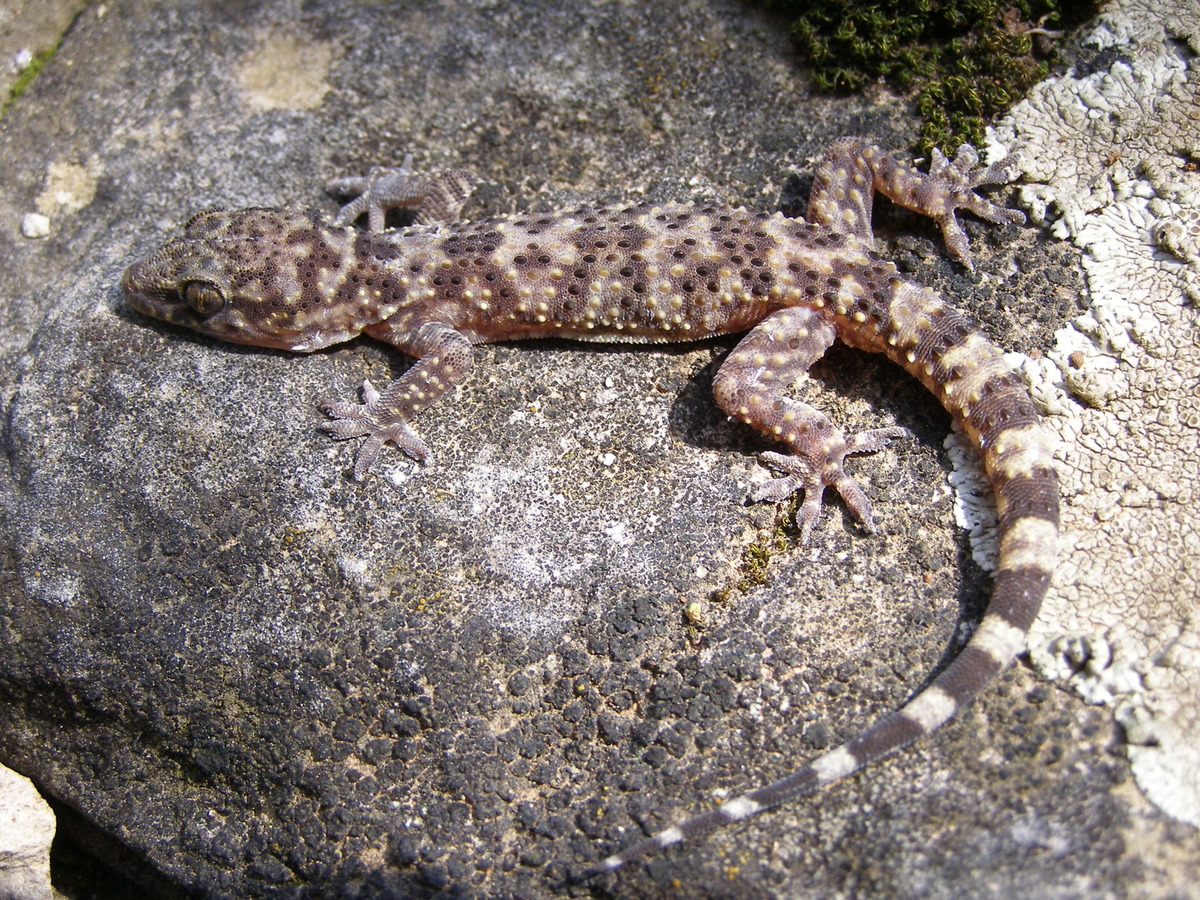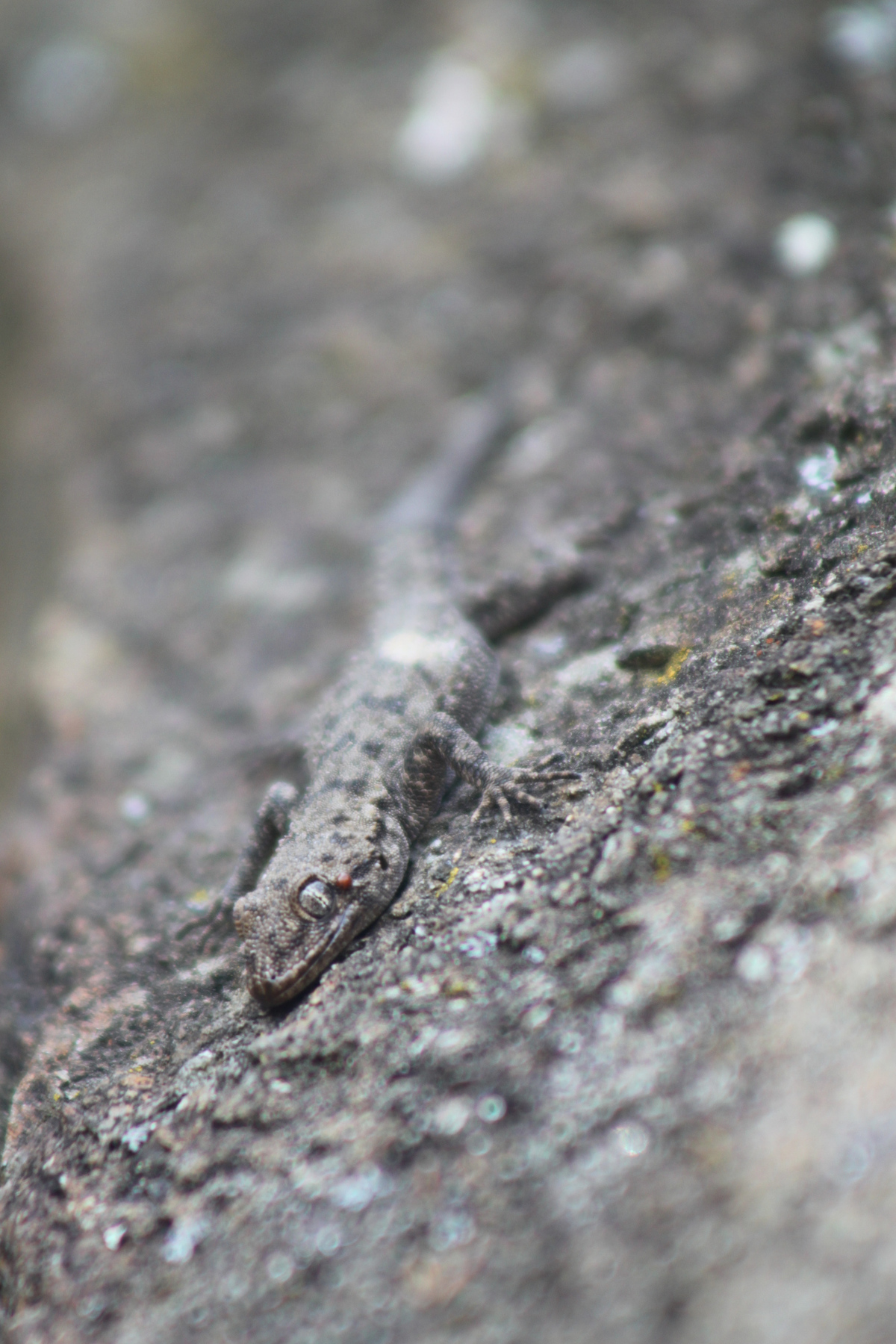Thursday, 20 July 2023 Geckos AMONG US: "Have you spotted a gecko?"
In the last two decades, geckos have also started to appear in our places. They were first observed in anthropogenic environments, especially in larger port cities such as neighboring Trieste, where geckos have become common representatives of the urban fauna. In the last few years, they have also been observed around Koper, and information about their presence also comes from other coastal areas. We expect to see three species of geckos in Slovenia – Tarentola mauretanica and Hemidactylus turcicus have been seen several times, and the Mediodactylus kotschyi, which is known to have already inhabited some European cities, is also likely to appear.
 Hemidactylus turcicus
Hemidactylus turcicus
Source: Department of Biodiversity UP FAMNIT
In order to better understand the spread of geckos, we conducted several field visits to potential locations, where we spotted geckos several times. The presence of geckos in our country is therefore confirmed with certainty, but we would need the help of the general public to monitor their appearance. Since geckos most often spread with the help of humans, we can expect them near human habitations. We expect the most data from Slovenian Istria, where geckos spend the winter more easily, but accidental sightings are not rare even in the interior of Slovenia.

Tarentola mauretanica
Source: Department of Biodiversity UP FAMNIT
About geckos
Geckos are a group of lizards that are widespread mainly in warmer places - in Europe they are indigenous to the Mediterranean. Larger species can reach up to 15 centimeters in length, and the species found here rarely exceed 10 centimeters. They can be distinguished from other lizards by the different coloration and shape of the scales, the upright pupil, which indicates a predominantly nocturnal lifestyle, and the absence of the eyelid, which prevents the animal from closing its eyes. In addition, they have an extremely effective adaptation for climbing - the tips of the toe pads are equipped with specially designed scales called lamella. They enable geckos climbing on relatively smooth, vertical surfaces. So we often see them high up on walls, especially where they have the possibility of quick retreat or hiding in the immediate vicinity - cracks, window sills, gutters. It is also interesting that they are one of the few reptiles that make sound.
They are not dangerous for humans and are even useful, as they feed on insects and other invertebrates. If you see them near your home, there is no reason to be afraid. They are mainly active at night, when they are easiest to observe when they hunt for prey near lamps. They also rarely enter homes.
We can therefore expect three types of geckos in the area of Slovenia: Tarentola mauretanica, Hemidactylus turcicus and Mediodactylus kotschyi.
Tarentola mauretanica is the largest European gecko and can reach a size of up to 15 cm, but they are mostly up to 10 cm in size. It can be recognized by its relatively stocky body and wider toe pads.
Hemidactylus turcicus is slightly smaller, at first glance slimmer and more colorful than the Tarentola mauretanica.
In our country, we could also potentially meet the Mediodactylus kotschyi, the smallest of the three species, which can be easily distinguished from the first two by its "bare toes", which do not have characteristic pads with lamella.
 Mediodactylus kotschyi
Mediodactylus kotschyi
Source: Department of Biodiversity UP FAMNIT
How can you help?
Considering the presence in our surroundings and the predicted climate changes, we can expect that geckos will become more numerous in the future. Since we are probably in the period of strengthening of gecko populations, the Department of Biodiversity UP FAMNIT is addressing you to help with the survey of the spread of geckos. They ask you to report the locations where you have seen geckos in Slovenia. It would be very helpful to have pictures or videos of the animals, based on which the animals could be unequivocally identified. Your information about geckos is collected at gekoni@famnit.upr.si.
Ajda Auersperger, Peter Glasnović and Martina Luznik from the Department of Biodiversity UP FAMNIT




